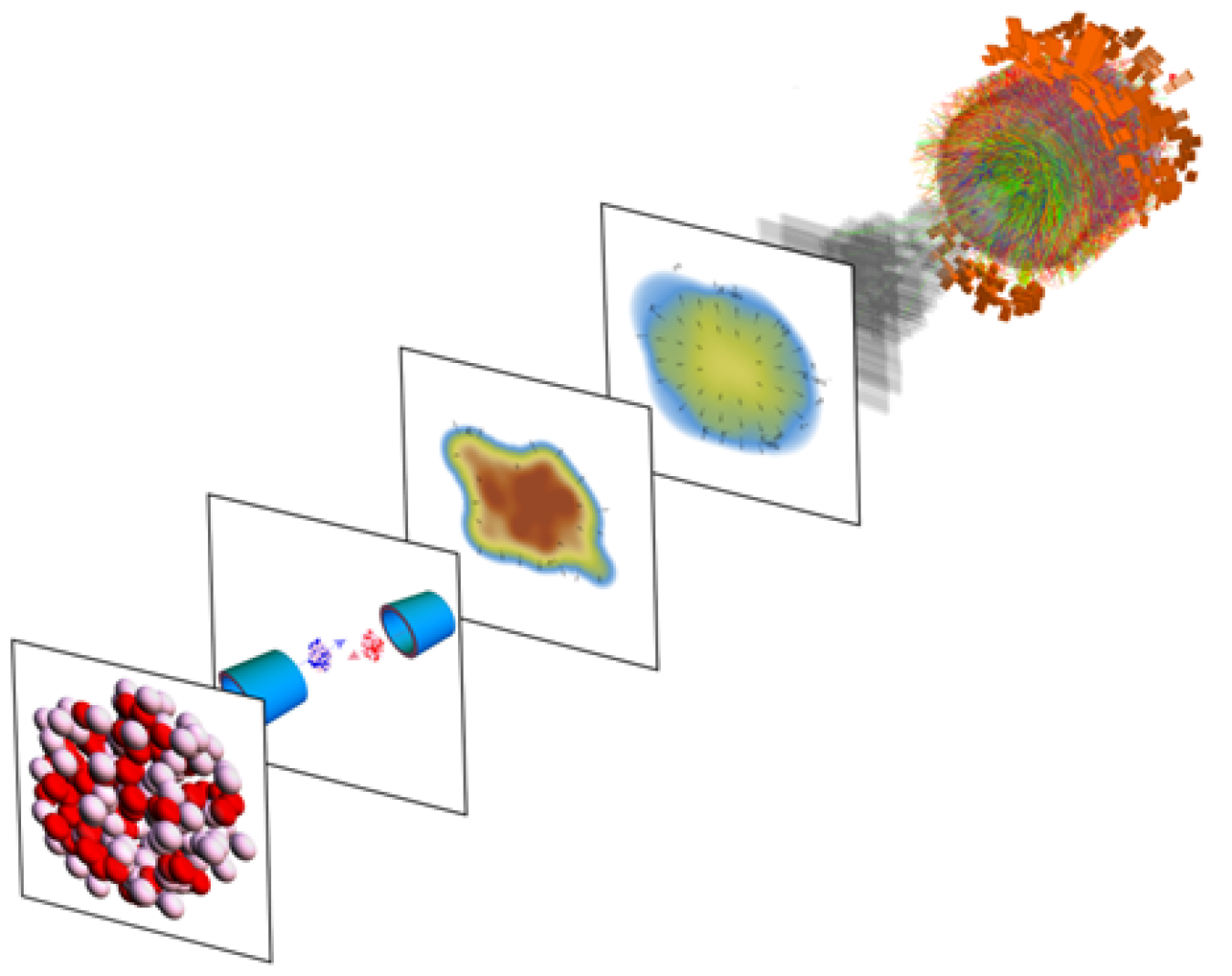
The Science
Heavy nuclei such as lead-208 are characterized by an outer shell of mostly neutrons, called the neutron skin. When these nuclei are collided at speeds close to the speed of light, the quarks and the gluons that make up the protons and the neutrons melt into a state of matter called the quark-gluon plasma. The shape and the size of the quark-gluon plasma these collisions produce are affected by the thickness of the neutron skin. This makes it possible to infer this thickness from experimental observations.
The Impact
In an atomic nucleus, the size of the neutron skin is sensitive to the strong interaction among protons and neutrons. The same interaction governs the behavior of the matter that composes neutron stars. These are among the most mysterious objects observed in the sky, with a mass roughly one to two times that of the Sun but with a radius of only about 6 miles. Therefore, determinations of the neutron skin on Earth permit us to deepen our knowledge of these extreme celestial objects.
Summary
The thickness of the neutron skin of a heavy nucleus affects the shape and the size of the quark-gluon plasma produced in high-energy collisions of two nuclei. This in turn affects the distributions of particles emitted from these collisions, measured by particle detectors at the Large Hadron Collider. Researchers have developed sophisticated theoretical models to describe these collisions, including advanced tools that allow scientists to tune the model parameters to describe a vast set of experimental data points.
In this analysis, researchers used the Trajectum hydrodynamic model, which was tuned to 670 experimental data points measured at the Large Hadron Collider. One of the parameters of this model is the size of the neutron skin. By comparing the model parameters to the experimental results, the researchers found the value for the neutron skin of lead-208 that best describes the data. This supplies the first determination of the neutron skin for lead nuclei using collider data.
Contact
Giuliano Giacalone
Heidelberg University
[email protected]
Govert Nijs
Massachusetts Institute of Technology & CERN
[email protected]
Wilke van der Schee
Utrecht University & CERN
[email protected]
Funding
One of the researchers was supported by the Deutsche Forschungsgemeinschaft (DFG, German Research Foundation) under Germany’s Excellence Strategy (the Heidelberg STRUCTURES Excellence Cluster). Another researcher was supported by the Department of Energy Office of Science, Office of Nuclear Physics.
Publications
Giacalone, G., Nijs, G., and van der Schee, W. Determination of the neutron skin of 208Pb from ultrarelativistic nuclear collisions, Physical Review Letters 131 202302 (2023). [DOI: 10.1103/PhysRevLett.131.202302]
Related Links
The open source Trajectum relativistic hydrodynamics code was employed in this analysis.
Scraped from https://www.sourcearu.com




